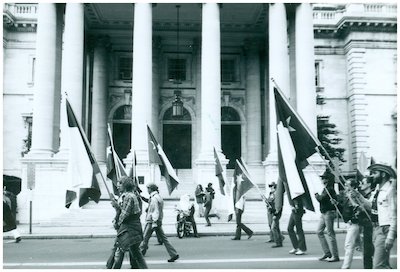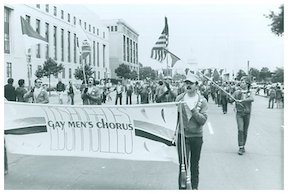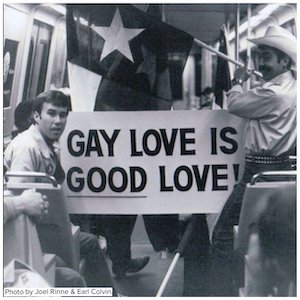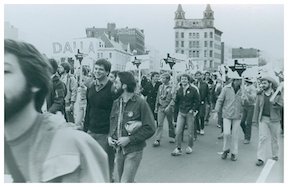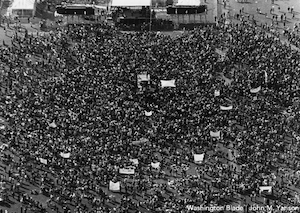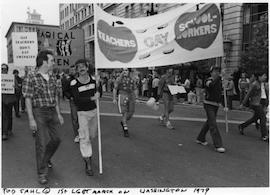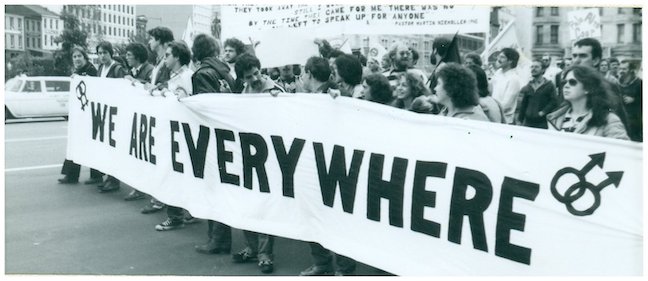
Marching For A United Community
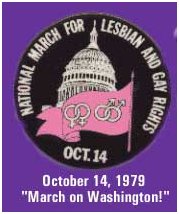
March on Washington Pin, October 14th 1979, Lary Butler
Planning to Change
A committee met several times but were unable to agree on the logistics of a national march. The assassination of Milk in 1978 revitalized the committee to follow through with a plan.
"Our brothers, and sisters in jails, in prisons throught the country, the problems facing lesbians and gay men in prisons are especially difficult. Lesbians and gay men in prison are all too often the victims of anti-gay violence. Violence which is encouraged."
-Audre Lorde, American Writer and Poet, October 14, 1979, Lesbian Herstory Archives
Five-Point Platform
The gay and lesbian community finally united on October 14, 1979, to march on Washington to commemorate the Stonewall Riots' tenth anniversary. They wanted to communicate with the country a five-point platform for equal rights.
Marcher interviewed at the March on Washington about the five-point platform.
Archives 3: The National March on Washington for Lesbian & Gay Rights / The Gay Freedom Train (1979), Jok Chruch and Adam Ciesielski
"We will be in Washington, building a broad, mass movement to fight for our freedom. Our demonstration will insist on freedom for all gay people and must reflect the anger and pride of our community in the face of government callousness, double-talk, and inaction. We should march on Washington, not plead with the government for token concessions, but to demand and struggle for liberation and an end to persecution."
- "Why We Are Marching" flier
Demanding Acceptance
They urged President Jimmy Carter to sign a bill to stop all discrimination against gays and lesbians in the military and federal jobs. They demanded acceptance for the lesbians and gays in American institutions. Organizers wanted this march to serve as an important educational tool for both the lesbian and gay community and the straight community.
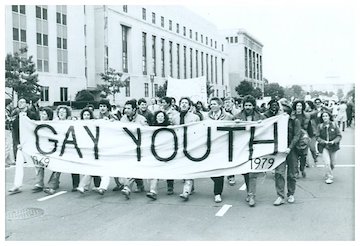
Lesbian and gay youth marching together in unity at the March on Washington, 1979, Larry Butler
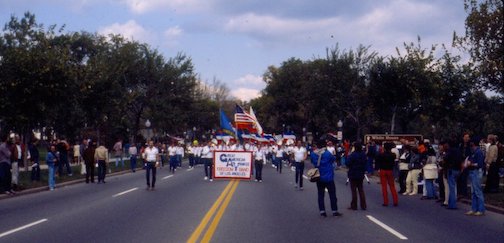
Los Angeles Gay Amerian Yankee Freedom Band, 1979, Larry Butler
“It was hard enough to be Black, to be Black and female, to be Black, female, and gay. To be Black, female, gay, and out of the closet in a white environment, even to the extent of dancing in the Bagatelle, was considered by many Black lesbians to be simply suicidal.”
- Audre Lorde, 1982
"For we are saying to the world that the struggle of lesbians and gay men is a real and particular and inseparable part of a struggle of all oppressed people within this country." - Audre Lorde ,October 14, 1979
The march began at the National Mall and ended with a rally at the Washington monument. Along with the march and rally, there were workshops on social issues involving the gay community. The activists organized themselves to meet with members of Congress to discuss gay rights legislation.

March on Washington, October 14, 1979, National LGBT Chamber of Commerance
Header photo credit: LGBT March on Washington, 14 Oct. 1979
